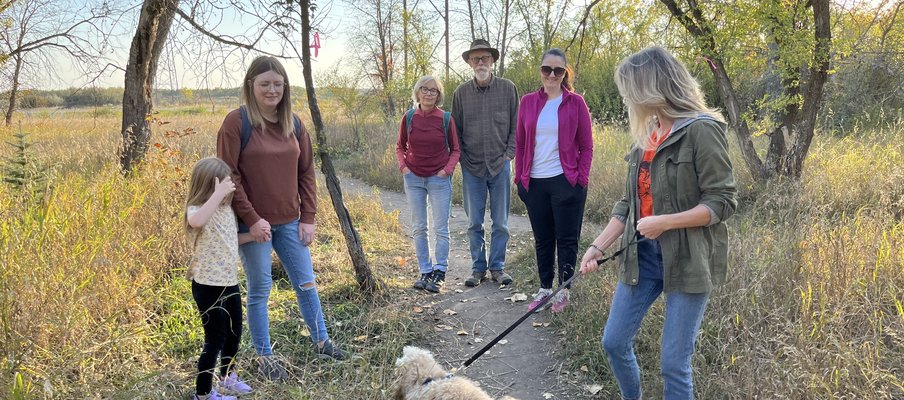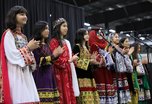Project creates understanding about Indigenous teachings from the land

Related Programs

A new “interpretive app” for the Saskatoon Afforestation areas, developed as a response to the Truth and Reconciliation Calls to Action, provides a richer learning experience thanks to Indigenous input.
The Miyo-wāhkōhtowin/Good Relations in Afforestation Areas GPS Interpretive App launched on September 22, 2023 during National Forest Week. The Global Positioning System Application (GPS App) allows visitors to the Richard St. Barbe Baker and George Genereux Urban Regional Parks in Saskatoon to learn about the ecology in the area through an Indigenous lens while navigating the park.
It also identifies the scientific, Cree, Michif and Dakota names for each species, as well as suggesting curriculum activities for elementary and high school students.
Julia Adamson, chair of the Friends of the Saskatoon Afforestation Areas (FSAA), says the reason for creating the App came out of a discussion with their board about how their work could protect the afforestation areas through interpretation of its ecological and cultural significance. “The Friends also recognized that integrating Indigenous philosophy and ways of knowing, which traditionally combined ethnobotany, culture and language as a whole, would be valuable in providing new models of how to relate to the land to restore and help build relationships between Indigenous and non-Indigenous communities.” Ethnobotany is the study of how people of a particular culture and region make use of indigenous plants.
The back end of the App was developed by students from the Computer Systems program at Saskatchewan Polytechnic in Saskatoon. They also helped identify the categories of ecological stories people could learn about such as, flowers, trees, wildlife, history, ecosystems and environmental protection.
Shortly afterwards, the FSAA began consulting with Indigenous community members to understand how to bring in their cultural perspectives in a respectful way, honouring the adage of “Nothing about us, without us.”
Karon Shmon, director of Métis culture and heritage, Gabriel Dumont Institute, says one of the reasons she became involved in the project was because FSAA recognized the Métis perspective was a part of the Indigenous perspective. She provided advice, support and permission to include the information from two of their publications. The publications, Plants growing along the river: A learning guide for reconciliation through lands, plants and Métis culture and Medicines to help us: Traditional Métis plant use by Christi Belcourt, offered the Métis ecological perspectives.
The group also hired Indigenous Educational Consultant Tammy Adair to write the interpretive stories. In her work, she spoke with Knowledge Keeper Linda Young on how to proceed to incorporate the Cree cultural perspectives into the project. Young’s input was greatly valued and helped create a better, more culturally respectful outcome.
Robert White, board member, FSAA, says involving Knowledge Keepers and Elders in projects is important to understanding, “what aspects of cultural teachings can be shared and what aspects are sacred and can’t be shared.”
White says although they had to make adjustments from their original plan about what they could include, the input from a Knowledge Keeper and Indigenousdeveloped resources, “improved the App’s coverage of local plant and animal species. It connected users with Indigenous knowledge about the environment and its conservation, along with increasing understanding of the significance of the land, plants, animals, and historical landmarks from an Indigenous perspective.”
Shmon says the App helps people understand the Indigenous worldview, “in that the First Nations, the Inuit, and the Métis see ourselves as a ‘part of’ nature and not ‘apart from’ it. The term ‘all my relations’ includes everything and not just people or specific people. A sense of stewardship and gratitude is part of this view. To know that Indigenous peoples had their own names for various plants and animals, in many Indigenous languages, helps those with settler origins understand that these names were there prior to contact with non-Indigenous peoples.”
She goes on to say, “This App will be especially helpful to those who like to use technology, which is often younger people, and for urban dwellers who have far less opportunity to appreciate the natural world. Valuing our natural environment, and seeing that we are part of a larger system that relies on natural elements such as air, water, plants and animals, may be instrumental in helping people take personal responsibility for caring for it. It may also encourage them to use any influence they may have to build support and sustainability for our natural world.”
This project received funding from SaskCulture’s Small Grant Accessibility Program, with funding from Sask Lotteries.




